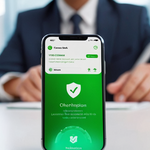
This comprehensive research report examines the viability, effectiveness, and implications of using Virtual Private Networks (VPNs) to bypass TikTok restrictions and bans. Through analysis of technical mechanisms, real-world effectiveness, legal frameworks, and user experiences across multiple jurisdictions, this investigation reveals that while VPNs offer a theoretical solution for accessing restricted platforms, their practical application involves significant technical, legal, and operational complexities. The report synthesizes findings on TikTok’s sophisticated detection systems, the multifaceted nature of platform bans, and the evolving landscape of digital censorship and access, providing a nuanced understanding of this important contemporary issue at the intersection of technology, regulation, and digital freedom.
Understanding the TikTok Ban Landscape and the Role of VPNs
The question of whether Virtual Private Networks can facilitate continued access to TikTok during government-imposed bans requires understanding both the technical architecture of such restrictions and the capabilities of VPN technologies. The situation became particularly acute in the United States, where TikTok faced a de jure nationwide ban beginning January 19, 2025, due to concerns over data collection and national security risks posed by ByteDance, the platform’s China-based parent company. However, as of September 2025, President Trump had extended enforcement delays multiple times and negotiated what was characterized as a qualified divestiture arrangement, creating a complex and ongoing regulatory situation. Beyond the United States, TikTok remains banned or severely restricted in multiple countries worldwide, including India since 2020, Afghanistan since 2022, and numerous others. These bans operate through different mechanisms and enforcement levels, creating varied circumstances in which VPNs might theoretically provide access. Understanding the technical foundations of both TikTok bans and VPN technology is essential to evaluating whether VPNs can reliably circumvent these restrictions.
VPNs function as encrypted tunnels that route internet traffic through servers located in different countries, masking a user’s actual IP address and making it appear as though they are browsing from an alternative geographical location. This fundamental capability creates the theoretical basis for bypassing geographically-based restrictions. When a government or internet service provider blocks TikTok through domain name system (DNS) blocking, IP address blocking, or other network-level restrictions, a VPN connection theoretically allows users to circumvent these barriers by routing their traffic through a server in a country where TikTok remains accessible. However, the actual effectiveness of this approach depends on numerous factors, including the sophistication of the ban implementation, the quality of the VPN service, device-specific limitations, and the specific mechanisms through which the platform has been restricted in a given jurisdiction. The situation becomes particularly complicated when examining app store restrictions, as these operate through entirely different enforcement mechanisms than network-level blocking.
How Governments and Platforms Implement TikTok Bans: Mechanisms and Enforcement
To properly evaluate VPN effectiveness, one must first understand the multifaceted ways in which TikTok bans are actually implemented. The most commonly cited bans operate at several distinct layers of internet infrastructure, each presenting different technical challenges for bypass attempts. The first and most immediately visible layer involves app store restrictions, where Apple’s App Store and Google’s Play Store remove TikTok from their distribution networks. This prevents new users from downloading the application and, critically, prevents existing users from receiving updates and security patches. Without the ability to update, the app experiences what experts describe as a “slow death,” becoming increasingly buggy, slower, and more vulnerable to security exploits over time. A VPN alone cannot address this particular restriction, as the app store availability is determined by device operating system controls and corporate policy decisions by Apple and Google rather than by network connectivity.
Beyond app store restrictions, governments can implement bans at the Internet Service Provider (ISP) level through multiple techniques. DNS-level blocking represents one such technique, where ISPs are instructed to resolve TikTok domain names to non-existent or null IP addresses, effectively preventing devices from locating TikTok’s servers through normal name resolution processes. However, VPNs can potentially bypass DNS blocking because they encrypt DNS queries and route them through the VPN provider’s servers in different jurisdictions, where DNS resolution is not blocked. A more sophisticated technique involves IP address blocking, where governments or ISPs maintain lists of all IP addresses associated with TikTok’s infrastructure and block traffic to those addresses at the network level. VPNs theoretically bypass this as well by routing traffic through VPN server IPs rather than directly to TikTok’s infrastructure.
Additional enforcement mechanisms complicate the situation further. Deep Packet Inspection (DPI) technology allows ISPs and governments to examine the content and metadata of encrypted traffic, identifying VPN usage itself based on characteristic traffic patterns and blocking VPN connections. More sophisticated approaches include Server Name Indication (SNI) blocking, where governments can determine which website a user is attempting to visit by inspecting unencrypted certificate information, then preemptively blocking the connection before encryption is established. Some VPN services have begun deploying obfuscation features that disguise VPN traffic as regular HTTPS traffic, making it harder to detect and block through DPI. Beyond network-level enforcement, TikTok itself may implement behavioral restrictions, where users detected as being in banned regions through device localization mechanisms can be prevented from accessing the service regardless of technical workarounds.
Technical Capabilities and Limitations of VPNs for TikTok Access
The technical capability of VPNs to bypass TikTok bans is genuine but narrow and increasingly limited. VPNs achieve their core function through encryption and server routing, creating secure tunnels that conceal user activity from ISPs and intermediate network infrastructure. When functioning properly, a VPN masks the user’s real IP address and replaces it with the IP address of the VPN server they have connected to, making it appear as though they are accessing the internet from the VPN server’s location. This geographic spoofing directly addresses DNS-level and ISP IP-based blocking, as the user’s connection to TikTok’s infrastructure appears to originate from a country where the service is not blocked. For users in regions where TikTok faces app store removals but server-level blocking is not implemented, or is less sophisticated, connecting through a VPN and changing app store location settings can potentially enable new downloads.
However, the limitations of VPNs for TikTok access become apparent when examining real-world implementation. One critical limitation involves the distinction between the mobile app and web-based access. TikTok is fundamentally designed as a mobile application, optimized for smartphones where it provides the full feature set users expect including video creation, advanced editing, live streaming, and algorithm-driven content discovery. The web version of TikTok, accessible through browsers, lacks many of these features and provides a considerably degraded experience. Experts consulted by Time Magazine noted that even if VPNs successfully bypass network-level restrictions, “VPNs may not work very well on smartphones, the very medium that TikTok is designed for.” VPN performance on mobile devices is inherently limited compared to desktop usage, as smartphones lack the full strength of VPN security implementation possible on computers. This technical reality creates a fundamental problem: VPNs might theoretically enable access to TikTok through a browser on a smartphone, but the experience would be substantially inferior to the native application.
A second critical limitation involves app store regional restrictions that operate independently of network-level blocking. To download TikTok from an app store in a region where the app remains available, users must change their app store region to correspond with that country. This requires not merely connecting to a VPN but actually modifying their Apple ID or Google Account settings, linking new payment methods, and entering false billing addresses from the new country. For Apple’s App Store, this process is particularly restrictive, as Apple maintains sophisticated localization controls and requires valid payment methods from the target region. This goes beyond what a VPN alone can accomplish and violates the terms of service of both Apple and Google. Users who take this step risk account suspension or termination.
A third limitation involves TikTok’s own sophisticated device and network localization mechanisms. TikTok does not rely solely on IP address information to determine user location; the platform utilizes multiple data sources including device GPS location data, SIM card country codes, device language settings, carrier information, and behavioral patterns to identify users in banned regions. Research into TikTok’s risk control systems reveals the platform employs multi-dimensional detection that correlates numerous data points to identify suspicious access patterns. When a user’s VPN-spoofed IP address conflicts with their device’s GPS location or SIM card information, TikTok’s algorithms flag this as anomalous activity. Simply connecting to a VPN is therefore insufficient; users must disable GPS location sharing, use a SIM card from the region they are pretending to be in, and ensure consistency across all device signals. This represents a significant technical barrier that goes well beyond simply turning on a VPN application.
Real-World Effectiveness and User Experiences with VPN Bypass Attempts
Empirical evidence of VPN effectiveness for TikTok access presents a mixed and increasingly negative picture. During the brief January 2025 shutdown in the United States, when TikTok went offline for approximately 14 hours before services were restored through executive order, some users reported that they were able to maintain access using VPNs connected to Canadian servers. However, these reports appear to be exceptions rather than the norm, and many users experienced difficulties even with premium VPN services. Community discussions on platforms like Reddit and Blind reveal that many users attempting to use VPNs to maintain TikTok access during the U.S. ban encountered obstacles, including being served TikTok’s ban notice despite VPN connection, inability to login, or account restrictions. One particularly revealing report from a user attempting to use a VPN with a Canadian connection indicated that “I changed my App Store country and used a vpn and they are still blocking it. TikTok really went above and beyond to make it hard.”
More significantly, successful VPN usage appears to depend heavily on factors beyond the VPN service itself. Users who reported success typically had taken additional steps including creating new app store accounts in the target country, using VPN services with dedicated IPs (IPs not shared with other VPN users), and employing VPNs specifically configured with obfuscation features designed to bypass sophisticated detection systems. As discussed on Tech Industry – Blind, standard use of commercial VPN services with shared IP addresses and standard protocols appears to result in TikTok either detecting the VPN and showing a restriction notice, or in the app functioning so inconsistently that it becomes impractical. Additionally, the experience degrades over time, as TikTok implements increasingly sophisticated detection methods in response to VPN usage, and as users remain unable to update their applications through official channels. Without app updates, even if users gain initial access through VPN workarounds, the application becomes progressively less stable and eventually non-functional.
The India ban scenario provides perhaps the most instructive real-world case study, as India has maintained a TikTok ban since June 2020 with no signs of lifting despite nearly five years of elapsed time. Indian users who attempted to continue using TikTok reported experiencing TikTok’s ban message, which explicitly informed them that “Sorry, TikTok isn’t available right now” and directed them to download their data. While some Indian users have likely found workarounds through VPNs and other technical means, the platform’s user base in India essentially collapsed following the ban, with massive migration to alternative platforms including Instagram Reels, YouTube Shorts, Moj, and Josh. This migration pattern suggests that while VPN access might theoretically be possible, the practical difficulties, unreliability, and degraded experience are sufficient that most users do not maintain access through such means. The fact that India has gone five years without seeing significant VPN-based user re-engagement despite TikTok remaining available on the global internet suggests that VPN access, while theoretically possible, is not a practical solution for most users.

Legal and Regulatory Framework Surrounding VPN Use for TikTok Access
A critical distinction exists between whether using a VPN to access TikTok is technically possible and whether doing so is legally permissible. In the United States, using a VPN is legal, and legal scholars and digital rights organizations have confirmed that using a VPN to access TikTok would not itself be illegal for individual users. Kate Ruane, Director of the Free Expression Project at the Center for Democracy and Technology, explicitly stated that “VPNs would allow users to access TikTok legally.” The legislation mandating the TikTok ban does not criminalize individual use of VPNs or access to TikTok by end users; rather, the law targets companies and service providers that facilitate the app’s operation within the United States. As a consequence, individual Americans using VPNs to access TikTok would not face personal criminal liability.
However, this legal clarity does not extend to all jurisdictions globally. In countries including China, Iran, Iraq, Belarus, Turkmenistan, and several others, VPN use itself is either illegal or severely restricted, with users facing imprisonment, substantial fines, or other penalties. In Turkmenistan, for example, government authorities have forced citizens to swear on the Holy Quran that they would not use VPNs, and citizens face unspecified fines if caught using them. Iran permits only government-approved VPNs and threatens users of non-approved VPNs with up to one year imprisonment. Iraq has imposed a complete ban on all VPN use since 2014 with no exceptions. In these jurisdictions, attempting to use a VPN to bypass a TikTok ban would itself constitute an illegal act, creating legal jeopardy independent of the TikTok access question.
Beyond legal liability, there exist terms-of-service considerations that users should understand. TikTok’s terms of service do not explicitly prohibit VPN use, nor do the terms specifically address TikTok access from banned regions. However, using a VPN to access TikTok in violation of a legal ban, or to evade TikTok’s own geographic restrictions, might be considered a violation of the terms even if not explicitly stated. More concretely, users who employ VPNs or other technical workarounds run the risk of account shadowbanning or permanent account suspension, particularly if their account shows signs of violating TikTok’s guidelines around unusual location changes, multiple simultaneous locations, or other patterns consistent with ban evasion. The practical result is that while using a VPN to access TikTok might not result in legal prosecution in many jurisdictions, it carries both technical risks and account security risks that individuals should carefully consider.
Shadowbanning, Account Detection, and the Risks of VPN Use on TikTok
One of the most significant practical consequences of using a VPN to access TikTok is the elevated risk of account shadowbanning or permanent suspension. TikTok has invested substantially in sophisticated detection systems designed to identify and restrict accounts accessing the platform through anomalous patterns consistent with ban evasion or suspicious activity. These detection systems operate through multiple mechanisms including device fingerprinting, behavioral analysis, and localization signal analysis. When TikTok detects patterns suggesting a user is in a banned region but accessing the platform, or is accessing from geographically impossible locations (such as appearing to be in multiple countries within short timeframes), the platform flags the account as suspicious.
Shadowbanning on TikTok involves the platform restricting the visibility of a user’s content without notifying them that restrictions have been applied. Content from shadowbanned accounts appears in limited quantities in viewers’ For You pages, receives reduced engagement, and fails to appear in hashtag search results or trending sections. For content creators who depend on TikTok for income or audience building, shadowbanning effectively renders their account economically unusable even if it remains technically active. Research on TikTok shadowbans indicates that accounts exhibiting suspicious behavioral patterns including frequent location changes, VPN usage, accessing from multiple locations, or rapid account switching face elevated shadowban risk. Users attempting to use VPNs to maintain access to TikTok during bans are precisely the demographic likely to exhibit such suspicious patterns, creating a catch-22 where their bypass attempts increase the likelihood their accounts will be restricted.
The mechanisms through which TikTok detects VPN usage are multifaceted and sophisticated. TikTok maintains databases of known VPN IP addresses, and when traffic originates from such addresses, the platform can flag it as potentially suspicious. Additionally, TikTok analyzes the consistency of device signals; when a user’s device reports being in one country (through GPS, SIM card, device language), but their IP address indicates another country, this incongruence triggers suspicion. Users attempting to evade this detection must disable location services entirely, use a VPN with a dedicated IP address not known to be a VPN, and maintain consistency with other device signals—a technically complex proposition that most users are unlikely to execute successfully. Research on antidetect browser technologies and fingerprinting systems specifically designed to defeat TikTok detection indicates that even these specialized tools can only reduce (not eliminate) detection risk.
The shadowban recovery process is also troubling from a user perspective. If an account is shadowbanned, the official TikTok recommendation is to cease using a VPN for approximately two weeks to three weeks, at which point the shadowban may be lifted. However, if the user’s goal was to continue accessing TikTok in a region where it is banned, ceasing VPN use means ceasing access to the platform, making the recovery process impractical. This creates a scenario where users who successfully use a VPN to maintain access risk their accounts being restricted, and recovering from that restriction requires abandoning their bypass technique. For content creators or users heavily invested in their TikTok presence, this represents a significant problem with no satisfactory solution.
Alternative and Complementary Access Methods Beyond Standard VPN Use
Given the limitations of conventional VPN approaches, various alternative and complementary techniques have emerged through user communities and technical literature. One approach involves using antidetect browsers specifically engineered to defeat platform detection systems by creating false device fingerprints for each browsing session. These specialized browsers, including Multilogin, GoLogin, and BitBrowser, are designed for managing multiple accounts without detection by mimicking the appearance of different devices. By modifying browser fingerprints, hardware signals, and device information across multiple dimensions simultaneously, antidetect browsers can make each account appear to come from an entirely different device, even if accessing from the same physical computer. These tools represent a substantially more sophisticated approach than simply using a VPN application, and they require more technical knowledge and deliberate setup, but they appear to offer significantly improved protection against detection compared to standard VPN use.
Another approach involves using the TikTok web interface rather than the mobile app, particularly through desktop browsers where the experience is less restricted than on mobile. While the web version of TikTok lacks many features available in the mobile app, it allows video viewing, searching, and basic interaction from most browsers. A VPN connected through a desktop browser and configured with obfuscation features may have higher success rates than mobile-based VPN access, and web browsers offer somewhat more sophisticated obfuscation and fingerprinting capabilities than mobile VPN applications. However, experts emphasize that the desktop TikTok experience is substantially inferior to the mobile experience, and this represents a significant compromise for users accustomed to the full-featured mobile application.
Third-party video viewing services and alternative access methods provide another avenue, though with significant limitations. Websites and services including UrleBird, TikTok video downloaders, and similar platforms allow users to view TikTok content from other regions without directly accessing TikTok. However, these services only provide access to content that has been previously uploaded or reposted; they do not enable full TikTok functionality including account access, content creation, or direct interaction with the platform. For users interested merely in viewing trending content or specific creators, these alternatives may suffice, but for content creators or users with established accounts and social connections on TikTok, such alternatives are generally inadequate.
A final complementary approach involves device-level techniques including GPS spoofing, SIM card swapping, and carrier changes, which some advanced users employ in combination with VPNs. However, these approaches carry substantial risks and are not recommended for typical users. GPS spoofing requires installing mock location applications or enabling developer mode on devices, which can compromise device security and violate TikTok’s terms of service. SIM card swapping involves obtaining a SIM card from another country and inserting it into one’s device, which may work if combined with proper VPN configuration but is impractical for most users and carries its own security risks. These device-level techniques, when employed, must be combined with consistent VPN usage and antidetect browser approaches, creating an escalating spiral of technical complexity and risk that moves far beyond simple VPN use.
Comparative Analysis: TikTok Bans and VPN Effectiveness Across Different Jurisdictions
The effectiveness of VPNs for TikTok access varies substantially depending on the specific jurisdiction and the manner in which the ban has been implemented. Understanding these variations provides important context for evaluating VPN viability. In India, which implemented the world’s most comprehensive TikTok ban in June 2020 and has maintained it continuously through September 2025, the ban is implemented through multiple layers including ISP-level blocking, app store removal, and reportedly through coordination with TikTok’s own servers to block Indian IP addresses. The persistence of this ban across nearly five years without any apparent significant re-engagement through VPN workarounds suggests that either VPN effectiveness in India is limited, or that the practical difficulties are sufficient to deter most users from attempting VPN access. The Indian case provides evidence that comprehensive, multi-layered bans can substantially reduce access even with VPN availability, as evidenced by the massive migration of Indian content creators to alternative platforms.
By contrast, in countries where TikTok bans have been less comprehensive or have included exceptions for certain categories of users, VPN effectiveness appears higher. Albania implemented a temporary one-year ban in December 2024 citing youth violence concerns, but this ban is understood to be temporary and implemented at a less sophisticated technical level than more entrenched bans. In such contexts, VPNs may offer more reliable access. Similarly, countries implementing partial bans affecting only government devices or certain populations, rather than comprehensive nationwide restrictions, present contexts in which VPNs might be more practically viable. Canada, which has not implemented a ban but has restricted TikTok from government devices, represents a context where VPN use, while potentially violating government device policies, would face no technical barriers at the network level.
The sophistication of ban enforcement also varies geographically based on underlying internet infrastructure and government technical capacity. Developed nations with sophisticated ISP coordination and investment in deep packet inspection and other advanced filtering technologies (such as China, which maintains highly effective VPN blocking despite widespread VPN availability) present substantially more difficult environments for VPN-based access than countries with less advanced technical infrastructure for enforcement. The United States, should it have implemented a comprehensive TikTok ban, would likely have deployed fairly sophisticated technical measures given the country’s advanced internet infrastructure, potentially making VPN access less reliable than in countries with less developed technical enforcement capabilities. The Trump administration’s multiple extensions of the TikTok enforcement delay, culminating in the September 2025 qualified divestiture arrangement, prevented testing of this hypothesis in the U.S. context, but expert commentary before the delays suggested substantial technical barriers to VPN access would likely have emerged.

The Role of VPN Service Quality and Specific Technical Features
Not all VPN services are created equal in their capacity to enable TikTok access during bans, and the quality and specific features of the VPN service employed substantially affects success rates. Premium VPN services including NordVPN, ExpressVPN, Surfshark, and Proton VPN offer features specifically designed for bypassing restrictions including obfuscation, rotating IP addresses, stealth protocols, and high-performance servers optimized for unblocking. NordVPN, frequently recommended as the best VPN option for TikTok access, offers servers in over 118 countries and supports obfuscation features designed to disguise VPN traffic as regular HTTPS traffic. ExpressVPN offers similar capabilities with over 3,200 servers across 105+ countries and features including Lightway protocol, obfuscation, and ShuffleIP technology that assigns different IPs for each new connection. These premium services represent the upper tier of VPN capability and offer substantially better success rates for TikTok access than free VPN services or low-cost providers.
The critical distinction lies in whether a VPN provider uses static or rotating IP addresses, and whether those IPs are shared among many users or dedicated to individual users. VPNs using shared IP addresses among many users present a problem: if one user engages in obvious TikTok ban evasion, TikTok can flag that IP address as suspicious or block it entirely, affecting all users of that shared IP. VPNs offering dedicated IP addresses, where an individual user receives an IP not shared with others, substantially mitigate this risk, as the IP is less likely to be pre-flagged as a VPN or as suspicious. Additionally, VPNs offering IP rotation, where a user receives a different IP address with each connection or even with each new website visited (as ExpressVPN’s ShuffleIP feature does), make it substantially harder for platforms to establish patterns of suspicious activity across multiple connections. Free VPN services typically use shared IPs with high-traffic volume, making them extremely unreliable for TikTok access as TikTok quickly identifies and blocks such IP addresses.
Beyond IP management, VPN protocol selection matters significantly. OpenVPN, WireGuard, and proprietary protocols like Lightway and NordLynx offer different levels of obfuscation and detection resistance. OpenVPN with obfuscation enabled can disguise VPN traffic effectively but typically offers lower speeds. WireGuard offers higher speeds but less sophisticated obfuscation. Proprietary protocols like ExpressVPN’s Lightway represent attempts to optimize both speed and obfuscation, though their effectiveness varies depending on the specific enforcement mechanism being bypassed. Technical features including automatic kill switches (which disconnect all traffic if the VPN connection drops, preventing accidental IP leaks), DNS leak protection, IPv6 leak protection, and WebRTC leak prevention all contribute to the robustness of VPN protection and reduce the likelihood of TikTok detecting bypass attempts through traffic analysis.
The evidence strongly suggests that casual VPN use through free services or low-cost VPNs with default settings is extremely unlikely to successfully enable sustained TikTok access in a well-implemented ban environment. Success with VPN access, to the extent it occurs, typically requires premium VPN services configured specifically for obfuscation, combined with dedicated IPs, and ideally combined with complementary technical measures including device fingerprinting and other bypass techniques. This substantially elevates the technical barrier and cost for users attempting to maintain TikTok access through VPN means, reducing the practical viability for most users.
Performance, Speed, and User Experience Degradation
A critical but often overlooked aspect of VPN use for TikTok access involves the substantial performance penalties associated with VPN connections. VPN encryption and server routing inherently introduce latency, reduce bandwidth, and slow connection speeds compared to unencrypted direct connections. For services heavily dependent on high-bandwidth streaming video like TikTok, these performance penalties are particularly problematic. Expert Kate Ruane from the Center for Democracy and Technology noted that if a TikTok ban forced the service’s data to be hosted outside the United States, there would be “distance that data has to travel, which may degrade the service, since video in particular is highly dependent upon high fidelity broadband Internet access.” Even with a high-quality VPN connection, the combination of VPN latency plus longer geographic distance for data transmission creates a compounding effect that substantially degrades the TikTok experience.
Additionally, if a comprehensive TikTok ban removed TikTok from U.S. app stores and prevented app updates, the combination of an outdated app version with performance degradation from VPN use would create particularly poor user experience. Outdated app versions often experience incompatibility issues with server-side changes, bug accumulation, and security vulnerabilities that compound over time. An app from January 2025 that never receives updates throughout 2025, 2026, and beyond would become progressively less functional. Combined with the latency and speed penalties of VPN use, the overall TikTok experience would degrade to a point where many users would likely abandon the platform entirely in favor of alternatives. This performance reality likely explains in part why the India ban, despite being in place for nearly five years, has not seen massive sustained VPN-based re-engagement; the degraded experience simply is not worth the technical effort for most users.
The Broader Policy Context: Balancing Security, Freedom, and Practicality
The question of VPN use for TikTok access exists within a broader policy debate about digital sovereignty, data protection, national security, and internet freedom. Policymakers implementing TikTok bans typically cite data privacy concerns and national security risks, arguing that ByteDance could be compelled by Chinese law to share American user data with the Chinese government or that the platform could be used for influence operations against American interests. These security concerns, while disputed by TikTok and its supporters, represent genuine policy considerations that governments weigh in implementing such restrictions. From this perspective, allowing easy VPN-based bypass of the ban would undermine the policy goal of preventing potentially hostile foreign entities from accessing American user data.
Conversely, digital rights advocates and free expression supporters argue that broad platform bans represent problematic censorship that restricts access to information and creative expression for millions of users. From this perspective, VPN technologies represent important tools for preserving digital freedom and preventing governments from exercising absolute control over internet access. The philosophical tension between these perspectives—government security interests versus user digital freedom—cannot be definitively resolved through technical analysis alone, but understanding it provides important context for evaluating VPN use for TikTok access.
A practical policy consideration involves enforcement feasibility. As noted by telecom analyst Roger Entner and supported by multiple expert sources, enforcing a nationwide TikTok ban in the face of widespread VPN availability is logistically challenging. Even if governments deploy sophisticated VPN blocking technologies (as China does), determined users can find workarounds, and VPN technology continues to evolve to defeat new blocking mechanisms. This enforcement challenge has led some policymakers to focus on alternative approaches including forced divestiture (requiring ByteDance to sell TikTok to non-Chinese owners) rather than outright bans, recognizing that bans face inherent technical limitations in an environment with available VPN technology. The Trump administration’s ultimate approach to the TikTok situation exemplified this pragmatic recognition, pursuing a qualified divestiture arrangement rather than enforcing an indefinite ban that would be difficult to sustain in practice.
The TikTok Ban VPN Verdict
The comprehensive analysis of VPN effectiveness for TikTok ban evasion reveals a complex picture that resists simplistic yes/no answers. From a purely technical perspective, VPNs can theoretically bypass certain categories of TikTok restrictions, particularly DNS-level and ISP IP-blocking enforcement mechanisms. However, this theoretical capability is substantially constrained by multiple practical, legal, and operational realities that collectively make sustained TikTok access through VPN means impractical for most users.
First, TikTok bans operate through multiple enforcement layers beyond simple network blocking, including app store removal that VPNs cannot address, sophisticated device localization mechanisms that conflict with VPN spoofing, and TikTok’s own detection systems that identify and restrict suspicious access patterns. Successfully evading all these layers simultaneously requires substantially more technical sophistication than simply activating a VPN application, involving device fingerprinting, SIM card coordination, dedicated IP addresses, and careful behavioral consistency. For most users, this level of technical engagement is impractical, and for many users in countries where VPN use itself is illegal, it is impossible.
Second, even successful VPN use for TikTok access entails substantial compromises in user experience. The mobile app—TikTok’s designed primary platform—does not function well through VPN connections, pushing users to web-based access with substantially limited features. Inability to receive app updates causes progressive degradation over time, and the combination of VPN latency plus potentially foreign server hosting creates substantial performance penalties. These compromises mean that even users who successfully establish VPN-based TikTok access often find the experience sufficiently poor that they migrate to alternative platforms. The India case study, with its five-year history and relatively clear pattern of permanent user migration to alternatives rather than sustained VPN-based re-engagement, provides strong evidence of this effect.
Third, the legal landscape varies substantially by jurisdiction, with VPN use itself being illegal in multiple countries including China, Iran, Iraq, Belarus, and others. In these jurisdictions, attempting to use a VPN to bypass a TikTok ban compounds the legal risk, as users face potential prosecution for VPN use itself rather than merely for TikTok access. Additionally, in all jurisdictions, users attempting VPN-based TikTok access risk account shadowbanning or permanent suspension, particularly if detected accessing from multiple locations or showing other suspicious patterns. For content creators or users heavily invested in their TikTok presence, this account termination risk represents a substantial deterrent.
Fourth, the effectiveness of VPN access degrades over time as platforms implement increasingly sophisticated detection mechanisms in response to observed VPN bypass attempts. TikTok has invested substantially in detection systems, and the platform has demonstrated willingness to implement blocking measures targeting VPN IP addresses and anomalous access patterns. As VPN ban evasion becomes more widespread, platforms are likely to accelerate detection innovations, making VPN access progressively less viable over time.
The practical implication for users is that while VPN access to banned TikTok is theoretically possible and legal in many jurisdictions, it is neither reliable nor practically sustainable for most users as a long-term solution. Users in countries where TikTok is banned face a choice between accepting its unavailability or migrating to alternative short-form video platforms, where many have found comparable or superior experiences. This reality explains observed user behavior across multiple jurisdictions, where TikTok bans have consistently led to mass migration to alternatives rather than sustained attempts at VPN-based access.
For policymakers, this analysis suggests that while VPN technologies do present technical challenges to comprehensive platform bans, these challenges are substantially less severe than theoretical discussions of VPN capabilities might suggest. The practical difficulty of sustained VPN use for TikTok access, combined with alternative platform availability, makes bans operationally viable despite VPN existence. However, the analysis also confirms that VPNs do provide sufficient bypass capability to prevent truly airtight platform restriction, suggesting that policymakers seeking to prevent access to specific services must supplement VPN-blocking mechanisms or accept that determined users will retain some access capability. The Trump administration’s ultimate pursuit of divestiture rather than indefinite ban enforcement reflects this practical recognition, acknowledging that enforcing an indefinite ban in the face of VPN availability is neither realistic nor preferable to structural reform of the problematic foreign ownership arrangements.
Protect Your Digital Life with Activate Security
Get 14 powerful security tools in one comprehensive suite. VPN, antivirus, password manager, dark web monitoring, and more.
Get Protected Now





